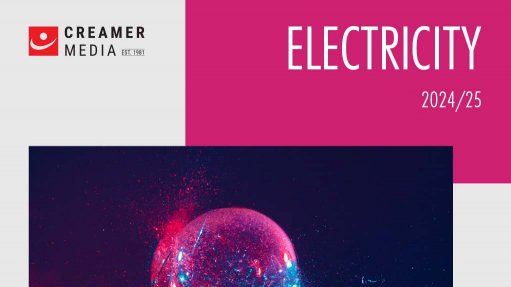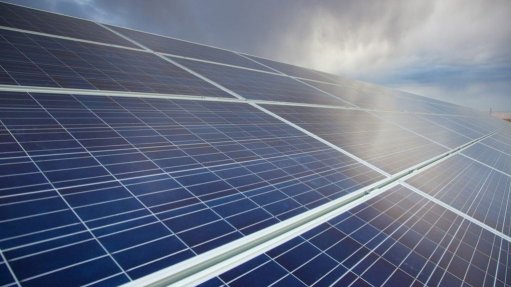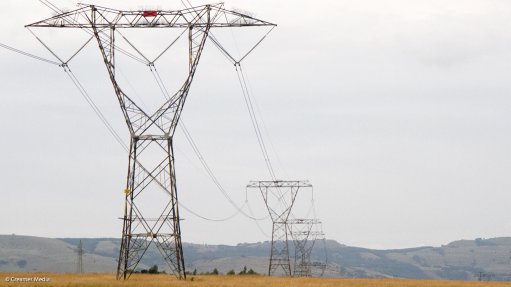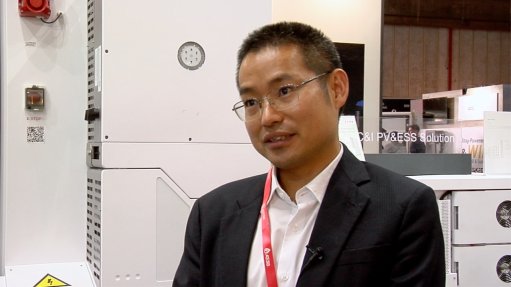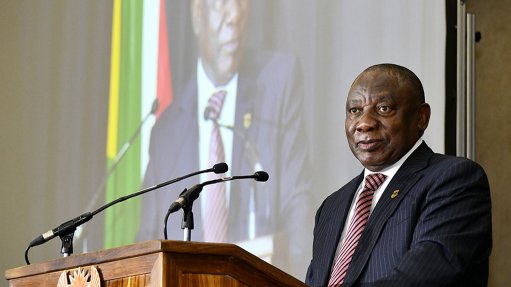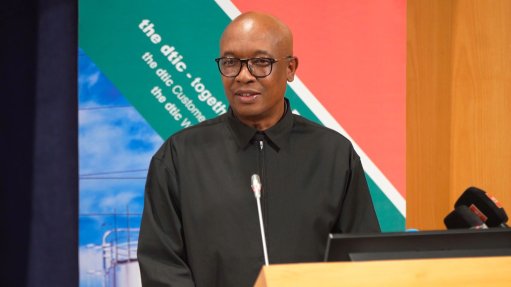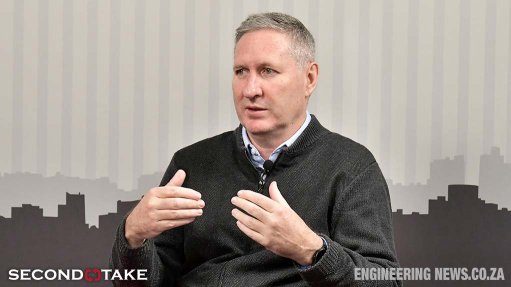World Bank’s Malpass visits Komati power station after approving JET loan
Public Enterprises Minister Pravin Gordhan welcomed World Bank president David Malpass to State power utility Eskom’s Komati power station following the bank’s approval of a R9-billion ($497-million) concessional loan to repurpose and repower the coal-fired power station into one which uses renewable energy and storage solutions.
The World Bank earlier this month and at the request of the South African government, announced that it will provide a concessional loan towards South Africa’s just energy transition (JET), of which the Komati project will be the first step.
Malpass stopped over in South Africa, for a short oversight tour while on his way to the Conference of the Parties 27 Summit, taking place in Egypt from November 6 to 18.
The loan facility, guaranteed by South Africa’s National Treasury, will cover three main components – the decommissioning of the Komati coal-fired power station; the repurposing and repowering of the station; and other elements of the JET, including provision for the training of Eskom employees, community development and stakeholder initiatives.
The loan includes $47.5-million from the Canadian Clean Energy and Forest Climate Facility.
The loan approval followed meetings held over the past two months in Washington DC, in the US, by Eskom and World Bank executives that included World Bank MD Alexel van Trotsenburg, South Africa’s representative and alternate executive director Ayanda Dlodlo and Africa VP Victoria Kwakwa.
The nine-boiler Komati power station, with a nameplate generation capacity of 1 000 MW and situated near Middleburg, in Mpumalanga, had its last remaining 121 MW coal-fired boiler shut down and decommissioned for the last time on October 31.
Komati underwent a mothballing procedure in the 1980s as a result of surplus generating capacity at the time in South Africa, having come back to life in February 2012 when additional generation capacity was needed again.
However, Eskom took the decision to decommission Komati power station this year as a result of its age and low output, and to convert the established grid connectivity infrastructure to evacuate 150 MW of solar photovoltaic, 70 MW of wind and 150 MW of battery power, once the transition is complete.
A containerised microgrid assembly factory has already been established on site, helping to prolong the usefulness of the infrastructure and provide economic opportunities to the community.
This is part of Eskom’s endeavours to establish a JET – one in which power station employees will be retained and retrained to operate a renewable energy power station, as well as find employment in renewable energy-related fields, such as for battery storage systems and microgrid infrastructure.
Eskom has developed a comprehensive JET strategy, which places equal importance on the transition to lower-carbon technologies, and the ability to do so in a manner that is just and sustainable. The employees remaining in Komati at the time of the decommissioning will become part of the repowering and repurposing project.
Malpass was also greeted at his visit to Komati power station by Eskom board chairperson Mpho Makwana and CEO Andre de Ruyter.
“Reducing greenhouse-gas emissions is a difficult challenge worldwide and particularly in South Africa given the high carbon intensity of the energy sector. Decommissioning the Komati plant this week is a good first step toward low carbon development,” said Malpass.
“We are cognisant of the social challenges of the transition and we are partnering with the government, civil society and unions to create economic opportunities for affected workers and communities,” he added.
“The repurposing of Komati is a critical first step in a long journey, one that we cannot walk alone if we are to strike the urgent balance between our environmental, economic and energy imperatives,” said Finance Minister Enoch Godongwana, who met with Malpass on November 5.
Godongwana added that government would continue to mobilise capital, internationally and domestically, to finance the transition in the interest of the lives and livelihoods of South Africans.
Meanwhile, a Komati training facility is already under development, and is designed to facilitate the reskilling, retraining and upskilling of Eskom employees and members of the community.
Eskom has signed a partnership agreement with the South African Renewable Energy Technology Centre of the Cape Peninsula University of Technology, and the Global Energy Alliance for People and Planet, to develop the training facility.
“This is in line with Eskom’s drive to ensure that we prepare our people and have a pipeline of local skills ready for the inevitable transition, which will be just,” said De Ruyter.
Given the accelerated global movement towards investment in a clean energy transition, he added that there was a need in South Africa to upskill, retrain and develop a workforce to take full advantage of the opportunities presented by this transition.
“To achieve this, Eskom is working with its recognised labour unions and representatives of the host community.”
Comments
Press Office
Announcements
What's On
Subscribe to improve your user experience...
Option 1 (equivalent of R125 a month):
Receive a weekly copy of Creamer Media's Engineering News & Mining Weekly magazine
(print copy for those in South Africa and e-magazine for those outside of South Africa)
Receive daily email newsletters
Access to full search results
Access archive of magazine back copies
Access to Projects in Progress
Access to ONE Research Report of your choice in PDF format
Option 2 (equivalent of R375 a month):
All benefits from Option 1
PLUS
Access to Creamer Media's Research Channel Africa for ALL Research Reports, in PDF format, on various industrial and mining sectors
including Electricity; Water; Energy Transition; Hydrogen; Roads, Rail and Ports; Coal; Gold; Platinum; Battery Metals; etc.
Already a subscriber?
Forgotten your password?
Receive weekly copy of Creamer Media's Engineering News & Mining Weekly magazine (print copy for those in South Africa and e-magazine for those outside of South Africa)
➕
Recieve daily email newsletters
➕
Access to full search results
➕
Access archive of magazine back copies
➕
Access to Projects in Progress
➕
Access to ONE Research Report of your choice in PDF format
RESEARCH CHANNEL AFRICA
R4500 (equivalent of R375 a month)
SUBSCRIBEAll benefits from Option 1
➕
Access to Creamer Media's Research Channel Africa for ALL Research Reports on various industrial and mining sectors, in PDF format, including on:
Electricity
➕
Water
➕
Energy Transition
➕
Hydrogen
➕
Roads, Rail and Ports
➕
Coal
➕
Gold
➕
Platinum
➕
Battery Metals
➕
etc.
Receive all benefits from Option 1 or Option 2 delivered to numerous people at your company
➕
Multiple User names and Passwords for simultaneous log-ins
➕
Intranet integration access to all in your organisation




